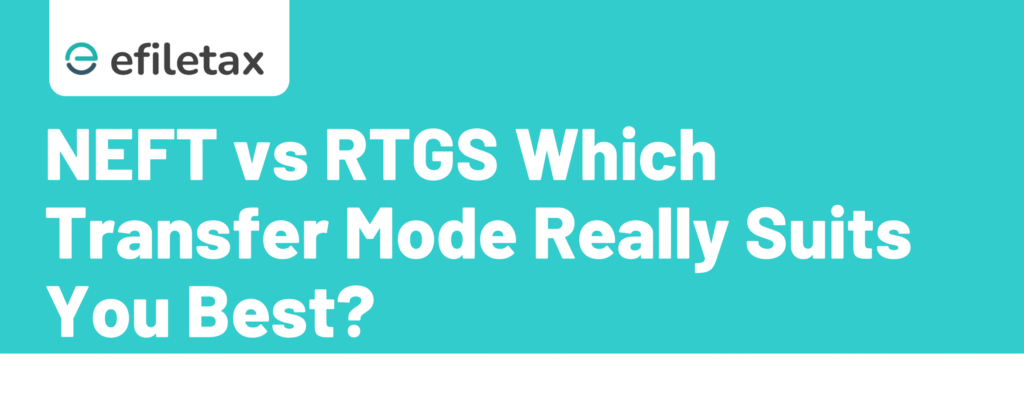
NEFT vs RTGS What Every Indian Should Know
If you’ve ever transferred money online, you’ve seen the options: NEFT or RTGS. But what’s the real difference between NEFT vs RTGS? Choosing the wrong one could delay your payment—or cost you more.
This blog simplifies both systems so you can transfer money smartly and confidently.
What is NEFT?
NEFT stands for National Electronic Funds Transfer. It’s a nation-wide payment system by RBI, allowing bank-to-bank money transfers in batches.
Key Features of NEFT:
- Operates 24×7, 365 days
- Funds are settled in half-hourly batches
- No minimum or maximum limit
- Ideal for small to medium transactions
- Available via internet banking, mobile app, or bank branch
- Transactions processed based on RBI’s centralized clearing
Example: Sending ₹5,000 to your landlord? NEFT is perfect.
What is RTGS?
RTGS means Real Time Gross Settlement. Unlike NEFT, here money is transferred immediately and individually.
Key Features of RTGS:
- Real-time processing, no waiting
- Minimum amount: ₹2 lakh
- No upper limit
- Ideal for high-value, time-sensitive transactions
- Available 24×7, as per RBI directive from Dec 2020
Example: Making a ₹5 lakh property advance? Use RTGS.
NEFT vs RTGS – Quick Comparison
| Feature | NEFT | RTGS |
|---|---|---|
| Full Form | National Electronic Funds Transfer | Real Time Gross Settlement |
| Timing | 24×7 in half-hour batches | 24×7 in real-time |
| Speed | Up to 30 minutes | Instant |
| Minimum Limit | No minimum | ₹2,00,000 |
| Maximum Limit | No cap (bank-defined) | No cap (bank-defined) |
| Best For | Routine personal payments | Urgent high-value transfers |
| Charges (if any) | Mostly free or minimal | May have higher charges |
Source: RBI – Electronic Payment Systems
When Should You Use NEFT vs RTGS?
Choose NEFT when:
- You’re transferring under ₹2 lakh
- The transfer is not time-sensitive
- You want lower or zero charges
Choose RTGS when:
- The amount is ₹2 lakh or more
- The payment is urgent (real estate, business deals)
- You want instant settlement
RBI Guidelines You Should Know
- RBI mandates round-the-clock availability of both NEFT and RTGS
- All scheduled commercial banks and major cooperative banks are RTGS/NEFT-enabled
- Always double-check beneficiary details—mistakes may delay funds or even cause a wrong credit
Expert Tip: Avoid Cut-off Time Confusion
Although NEFT and RTGS are 24×7, banks may have internal cut-off times for same-day processing, especially on holidays or weekends. If you’re using RTGS for a big payment, do it during banking hours to avoid any hiccup.
Frequently Asked Questions (FAQs)
Q1. Is NEFT available on Sundays?
Yes. Since RBI’s 2019 update, NEFT works 24×7, including Sundays and bank holidays.
Q2. Is there GST on NEFT/RTGS charges?
Yes, GST at 18% may apply if your bank charges a fee. Most digital channels now offer zero charges.
Q3. Can I cancel an RTGS transaction?
No. Once processed, RTGS is non-reversible. You can contact your bank only for rectification or legal recovery.
Summary
NEFT vs RTGS: NEFT is best for low-value, routine transfers and works in half-hourly batches. RTGS is ideal for urgent, high-value transfers starting ₹2 lakh. Know which one to use and why.
Final Thoughts
Choosing between NEFT vs RTGS isn’t hard once you know their strengths. For routine payments, go with NEFT. For big or urgent transactions, RTGS is your friend.